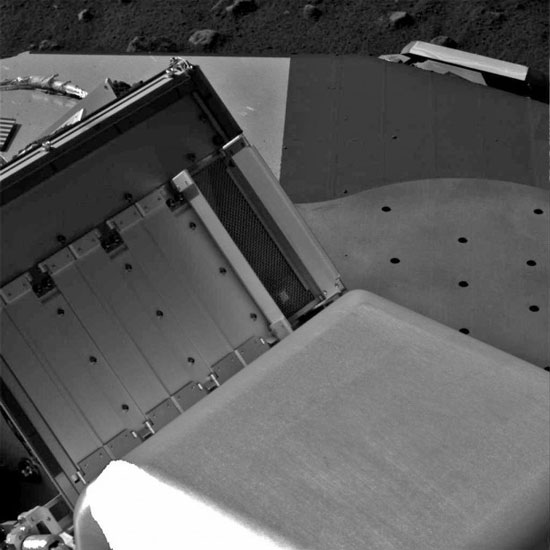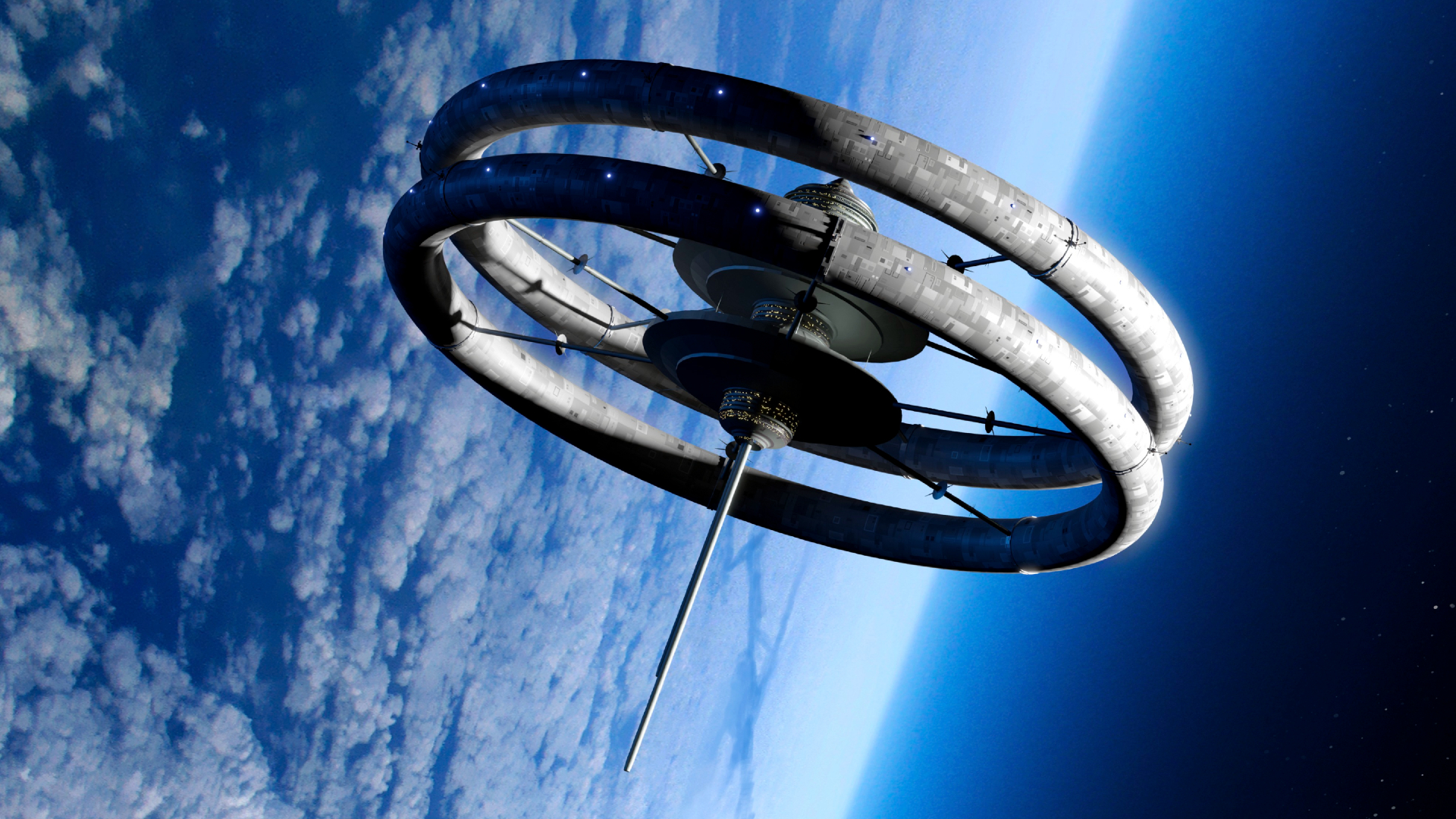Mars Lander to Try New Scoop Tactic

NASA will try again Sunday night to to get some dirt into the Phoenix Mars Lander's onboard oven, this time using a revised method.
Images received Sunday morning showed the soil collected on Sol 60, the 60th Martian day of the mission, had fallen out of the scoop, which had been left inverted over the lander's deck. Earlier in the weekend, mission officials had said they thought the material got stuck to the back of the scoop.
"We are going to modify the process we ran on Sol 60 to acquire another icy sample and attempt to deliver it to TEGA," the Thermal and Evolved-Gas Analyzer, said Barry Goldstein, Phoenix project manager from NASA's Jet Propulsion Laboratory in Pasadena, Calif. "We will repeat what we did successfully with small modifications to adjust for what we learned."
The Sol 60 effort on July 26 by Phoenix successfully obtained a sample by rasping 16 holes into and scraping the work trench informally named "Snow White." Most of the sticky Martian soil adhered to the scoop even after the scoop was tipped and the rasp activated to help sprinkle soil into TEGA.
The revised plan includes reducing the length of time the rasp operates as it makes the holes in the trench to reduce any potential heating of the sample, and for increasing the number of times the scoop is vibrated during the sample delivery action.
A screened opening over the oven measures about 4 inches (10 centimeters) by 1.5 inches (3 centimeters).
The oven itself is roughly the size of an ink cartridge in a ballpoint pen.
Breaking space news, the latest updates on rocket launches, skywatching events and more!
The aim of the $420 million mission, which landed on May 25, is to characterize the dirt and icy layer that lies below it in the north polar regions of Mars to look for signs that the planet might have been habitable at some point in the past. Mission scientists have applied to NASA to extend the mission past its originally-slated 90 days.
- Video: Digging on Mars
- Earth vs. Mars: Polar Opposites
- Images: Phoenix on Mars!

Space.com is the premier source of space exploration, innovation and astronomy news, chronicling (and celebrating) humanity's ongoing expansion across the final frontier. Originally founded in 1999, Space.com is, and always has been, the passion of writers and editors who are space fans and also trained journalists. Our current news team consists of Editor-in-Chief Tariq Malik; Editor Hanneke Weitering, Senior Space Writer Mike Wall; Senior Writer Meghan Bartels; Senior Writer Chelsea Gohd, Senior Writer Tereza Pultarova and Staff Writer Alexander Cox, focusing on e-commerce. Senior Producer Steve Spaleta oversees our space videos, with Diana Whitcroft as our Social Media Editor.
